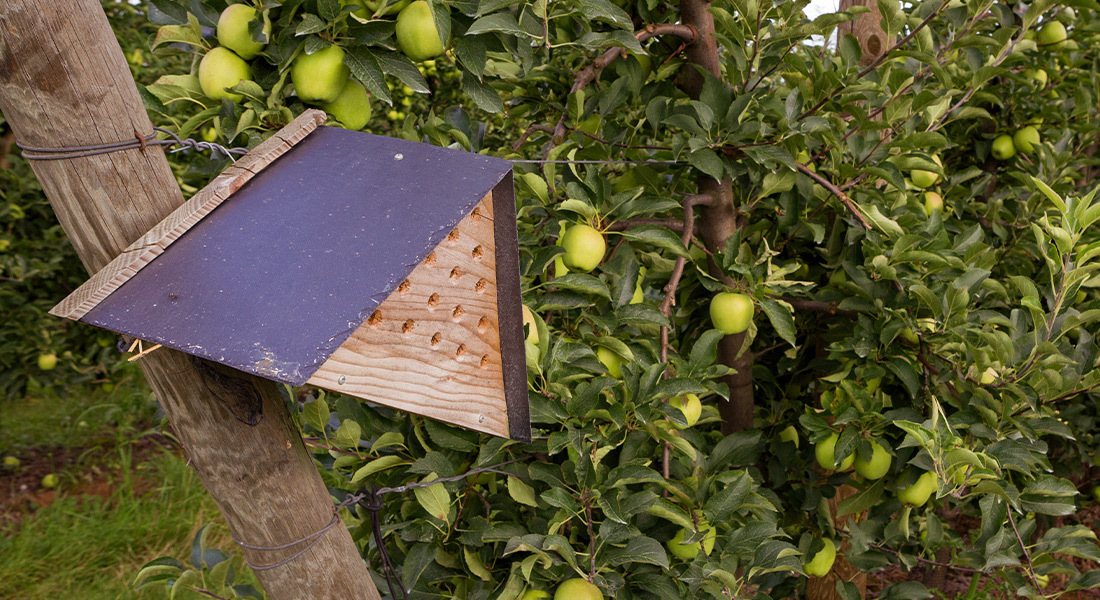I would love to attract mason bees to my yard, but I’m not sure how. Any suggestions?

Everyone has heard of honeybees and their many benefits. But there’s another group of bees that also do an amazing job of pollinating. Mason bees got their name from their habit of using mud, or other “masonry” materials in creating their nests. When available, mason bees also use hollow stems or holes in wood made by wood-boring insects as nests.
Here are some quick fun facts about mason bees:
- There are more than 150 species in the mason bee group
- While honeybees gather pollen on their hind legs, mason bees belly-flop into blossoms and the pollen clings to their bodies
- A single mason bee can pollinate up to 2,000 flowers per day — doing the work of 100 honeybees
- Mason bees pollinate all sorts of early-blooming plants, such as forsythia, crocus, camellia, candytuft, and bleeding heart
- They are not aggressive, even when you’re in close proximity
- Male mason bees don’t sting at all — and female mason bees only sting in defense when stepped on or squeezed
- Mason bees don’t have hives, so there’s nothing for them to defend, thus their non-aggression
- Female mason bees lay their eggs in gaps, cracks and hollow stems, closing the bottom with a mud plug, then adding pollen, nectar and an egg, before sealing the top with another mud plug
Attracting mason bees to your yard
There are three main things you can do the help mason bees find a welcoming home in your garden space.
- Plant native flowers: Coreopsis, sunflowers, columbine, and switchgrass all help mason bees thrive, just to name a few examples.
- Steer clear of pesticides: Eliminating chemicals in your yard helps mason bees, as well as other insects and birds, not to mention being harmful for people and pets.
- Provide nesting sites: The best way to do this is to allow for a bit of imperfection and a more natural space. Mason bees look to make their simple nests in cracks, crannies and hollowed-out tubes. You can also set out inexpensive mason bee houses, which feature several small wooden tubes just right for a nest.
Share This
